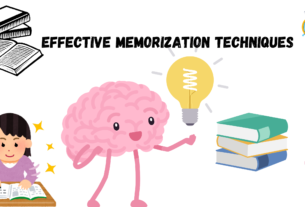Remember that one time when you sat down to study, surrounded by your textbooks and notes, and felt completely overwhelmed? You probably spent hours staring at the same page, with nothing actually sticking in your brain. We’ve all been there. But what if I told you that studying doesn’t have to be a painful, unproductive experience? What if I answer your question “HOW TO STUDY EFFECTIVELY”. With the right strategies, you can turn those dreaded study sessions into something not only effective but maybe even enjoyable.
Studying effectively is the key to unlocking your academic potential. However, not just about the hours you put in, but about making those hours count. In this article, we’re going to dive deep into how you can study smarter, not harder, and actually get results.
We’ll explore everything from understanding your learning style to setting goals, creating a productive study environment, and mastering time management. Along the way, we’ll share some stories, tips, and even a few laughs to keep you engaged. At the end of this article, you’ll be armed with all the tools you need to make studying not just bearable, but effective and efficient.
2. Understanding Your Learning Style
Ever wonder why some people can remember everything they hear in a lecture, while others need to draw it out to really get it? That’s because everyone has a unique way of processing information—what we call a learning style. Figuring out your learning style is like finding the right key for a lock; once you have it, everything clicks.
Types of Learning Styles:
- Visual Learners
Visual learners think in pictures. They remember information better when it’s presented in diagrams, charts, or color-coded notes. If this sounds like you, don’t just read your textbook—turn your notes into mind maps or sketches to really grasp the material. - Auditory Learners
If you find yourself memorizing song lyrics or recall conversations easily, you might be an auditory learner. These learners benefit from hearing information, so consider recording lectures or reading your notes out loud. Listening to educational podcasts or discussions can also be a great way to study. - Kinesthetic Learners
Do you find it hard to sit still during study sessions? You might be a kinesthetic learner, someone who learns best by doing. For you, studying might involve hands-on activities like building models, conducting experiments, or using flashcards that you can physically move around. - Reading/Writing Learners
If you love making lists, jotting down ideas, or thrive on reading textbooks, then you’re likely a reading/writing learner. This style benefits from traditional study methods like rewriting notes, summarizing information, and organizing data into lists.
Application:
Understanding your learning style isn’t just a fun personality test—it’s a game changer for how you approach studying. For example, if you’re a visual learner, try color-coding your notes and using diagrams. Auditory learners might benefit from study groups where they can discuss the material. Kinesthetic learners can incorporate movement into their study sessions, like walking while reviewing flashcards. Reading/writing learners should focus on rewriting key concepts in their own words.
As Aristotle once said, “Knowing yourself is the beginning of all wisdom.” When you understand how you learn best, you can tailor your study methods to match, making the entire process more efficient and enjoyable.
3. Setting SMART Goals
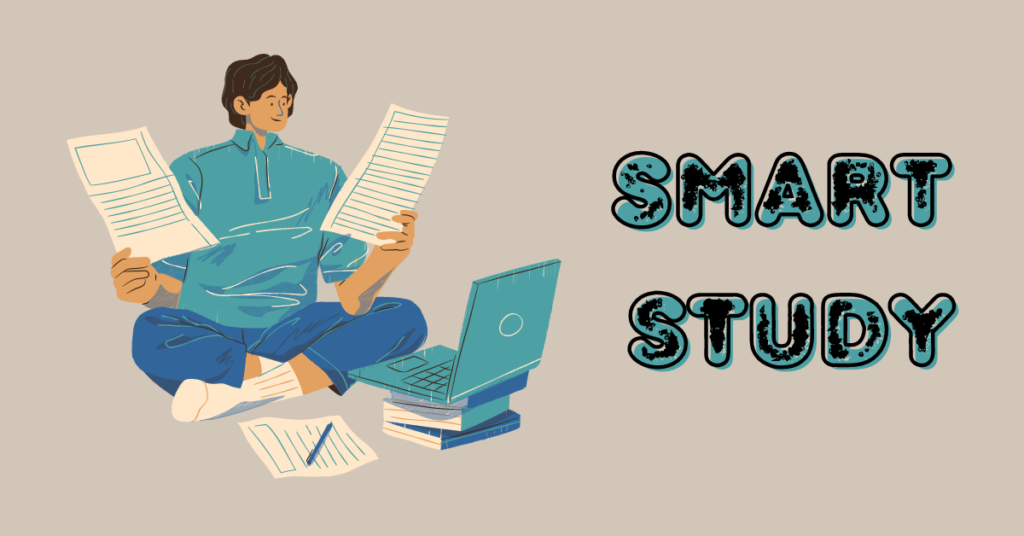
You’ve probably heard the phrase “work smarter, not harder.” But what does that actually mean when it comes to studying? One powerful way to study smarter is by setting SMART goals. SMART stands for Specific, Measurable, Achievable, Relevant, and Time-bound. These goals are designed to give you a clear path forward, making it easier to stay focused and track your progress.
Breaking Down SMART Goals:
- Specific
Vague goals lead to vague results. Instead of saying, “I want to get better at math,” be specific: “I want to improve my algebra skills by practicing equations for 30 minutes each day.” - Measurable
How will you know when you’ve achieved your goal? A measurable goal could be, “I want to increase my score by 10% on the next practice test.” This gives you a clear target to aim for. - Achievable
It’s great to aim high, but your goals should also be realistic. If you’re currently getting a C in a subject, jumping to an A+ overnight might not be achievable. Instead, aim for steady improvement: “I want to move from a C to a B by the end of the semester.” - Relevant
Your goals should align with your overall objectives. If your dream is to become a doctor, focusing on excelling in biology and chemistry would be more relevant than spending all your time on subjects that don’t contribute to your long-term plans. - Time-bound
Deadlines are key. A goal without a timeline is just a wish. Set a clear timeframe, like “I will complete my essay by Friday at 5 PM.” This helps you stay motivated and on track.
Examples of SMART Goals in Studying:
- Example 1: “I will review three chapters of my history textbook every week for the next month, aiming to score at least 85% on the weekly quizzes.”
- Example 2: “I will write one practice essay every Saturday for the next four weeks to improve my writing skills, aiming to cut my writing time by 15 minutes.”
Now, take a moment to think about your own study habits. What’s one area where you want to improve? Try setting a SMART goal for it. Write it down and keep it somewhere visible, like on your desk or your phone, to remind yourself of your commitment.
As the famous motivational speaker Zig Ziglar said, “A goal properly set is halfway reached.” By setting SMART goals, you’re already halfway to achieving your academic success.
4. Creating an Effective Study Environment
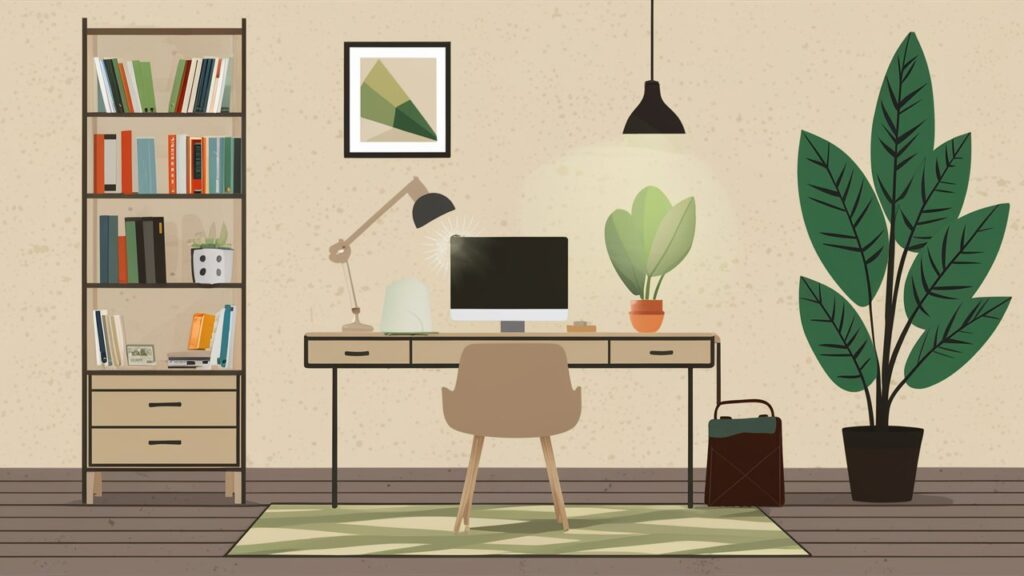
Have you ever tried to study in a noisy room or at a cluttered desk? It’s nearly impossible to focus, right? Your study environment plays a huge role in how well you can concentrate and retain information. Just like a plant needs the right soil, light, and water to grow, your brain needs the right environment to thrive during study sessions.
Tips for Creating the Perfect Study Environment:
- Minimize Distractions
Distractions are the enemy of productivity. Whether it’s your phone buzzing, the TV in the background, or people chatting nearby, these interruptions can break your concentration. Try studying in a quiet place, like a library or a dedicated study room. If you’re at home, let your family or roommates know that you need some uninterrupted study time. - Organize Your Space
A cluttered desk leads to a cluttered mind. Keep your study area tidy and organized. Make sure everything you need—books, notes, pens, and highlighters—is within reach. Consider having a specific spot for each item, so you’re not wasting time searching for things during your study session. - Lighting and Temperature
Lighting can affect your mood and focus. Natural light is ideal, but if that’s not an option, make sure your study area is well-lit with a desk lamp that doesn’t strain your eyes. Temperature also matters; if it’s too hot or too cold, you’ll find it hard to concentrate. Aim for a comfortable temperature that keeps you alert. - Comfort, Not Too Comfortable
While it’s important to be comfortable, being too comfortable can lead to laziness. A supportive chair that keeps you upright is better than lounging on a bed or sofa. This helps your brain associate the space with work, not relaxation. - Incorporate Elements that Boost Focus
Some people find that certain elements, like background music, help them focus. If this works for you, try playing instrumental music or nature sounds at a low volume. On the other hand, if music distracts you, it’s best to study in silence. You could also try using scents like peppermint or citrus, which are known to enhance concentration.
Take Sarah, for example. She used to study on her bed with the TV on in the background, but her grades were suffering. One day, she decided to clear a small corner of her room and turn it into a study nook. She added a desk, a comfortable chair, and some inspiring quotes on the wall. Within a few weeks, Sarah noticed that she could focus better and study more efficiently, leading to improved grades.
As the saying goes, “A clean space is a clear mind.“ By creating an environment that’s conducive to learning, you’re setting yourself up for success.
5. Time Management
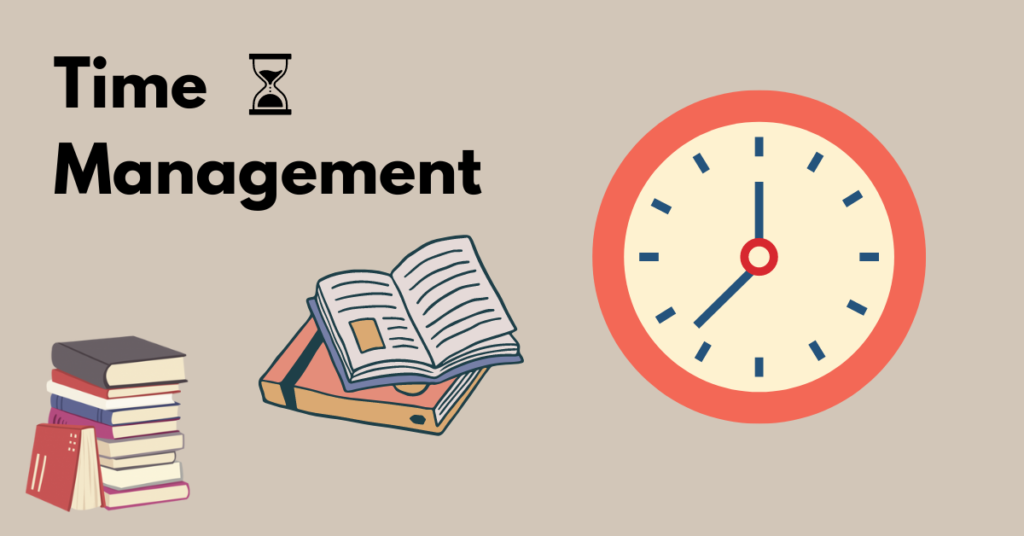
Why Time Management Matters:
We all have the same 24 hours in a day, but how we use those hours can make all the difference, especially when it comes to studying. Effective time management isn’t just about cramming more into your day; it’s about making sure you have enough time for the things that matter most, including rest and relaxation.
Key Time Management Techniques:
- Pomodoro Technique
The Pomodoro Technique is a popular method for staying focused and productive. Here’s how it works:- Set a timer for 25 minutes and focus on one task until the timer goes off.
- Take a 5-minute break after each 25-minute session.
- After four sessions, take a longer break (15-30 minutes).
- This method helps break your study time into manageable chunks, making it easier to stay focused and avoid burnout. The frequent breaks also give your brain time to recharge.
- Time Blocking
Time blocking involves dividing your day into blocks of time, each dedicated to a specific task or subject. For example, you might block out 9:00-10:30 AM for studying biology, 10:30-11:00 AM for a break, and 11:00 AM-12:30 PM for math. This method ensures that you allocate sufficient time to each subject without getting overwhelmed.
Pro Tip: When creating your time blocks, be realistic about how much you can accomplish. Don’t forget to include breaks and some buffer time in case a task takes longer than expected. - Prioritization with the Eisenhower Matrix
The Eisenhower Matrix is a tool that helps you prioritize tasks based on urgency and importance. The matrix is divided into four quadrants:- Urgent and Important: Tasks that need to be done immediately (e.g., studying for tomorrow’s exam).
- Important but Not Urgent: Tasks that contribute to long-term goals but don’t need immediate attention (e.g., working on a research paper due next month).
- Urgent but Not Important: Tasks that need to be done quickly but aren’t crucial (e.g., replying to a non-critical email).
- Not Urgent and Not Important: Tasks that are neither urgent nor important and can often be eliminated (e.g., mindless scrolling through social media).
- By categorizing your tasks, you can focus on what really matters and avoid wasting time on less important activities.
- Avoiding Multitasking
It’s tempting to try to study multiple subjects at once or to study while watching TV. However, multitasking often leads to poorer retention and understanding. Instead, focus on one task at a time to maximize efficiency and effectiveness.
Now that you’ve learned these time management techniques, take a moment to think about your current study schedule. Which method could help you manage your time better? Try implementing one of these strategies during your next study session and see how it impacts your productivity.
Consider John, a university student who was constantly stressed about never having enough time to study. He decided to try the Pomodoro Technique and was surprised by how much more he could accomplish in shorter, focused bursts of time. By the end of the semester, John had not only improved his grades but also felt less stressed and more in control of his schedule.
As Benjamin Franklin wisely said, “You may delay, but time will not.” By managing your time effectively, you can stay ahead of your studies and avoid the last-minute panic that comes with procrastination.
6. Effective Note-Taking
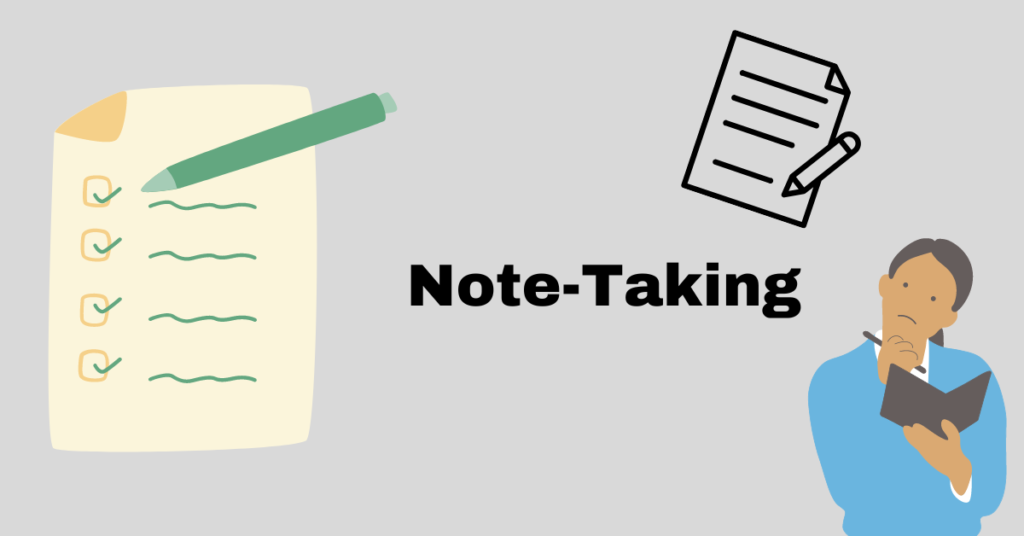
Why Note-Taking Matters:
Taking good notes isn’t just about writing down what your teacher says; it’s about processing information in a way that makes it easier to understand and remember later. Effective note-taking is a skill that can significantly enhance your learning experience and improve your academic performance.
Popular Note-Taking Methods:
- The Cornell Method
The Cornell Method is a structured format that encourages active engagement with the material. Here’s how it works:- Divide your page into three sections: a narrow left column (for cues), a wider right column (for notes), and a bottom section (for a summary).
- During the lecture, take notes in the right column.
- After the lecture, write down key terms or questions in the left column.
- Summarize the main ideas in the bottom section.
- This method not only helps you organize your notes but also encourages you to review and reflect on the material soon after learning it.
- Mapping Method
If you’re a visual learner, the Mapping Method might be for you. This technique involves creating a visual diagram of the material:- Start with a central idea in the middle of your page.
- Branch out with main topics, and then create sub-branches with details or examples.
- Use arrows and connectors to show relationships between ideas.
- Mapping is especially useful for subjects with complex concepts that are related to each other, such as history or science.
- Outlining Method
The Outlining Method is straightforward and works well for most subjects:- Begin with the main topic at the top.
- Indent subtopics and details underneath the main topic.
- Use bullets or numbers to further organize information.
- This method creates a clear and hierarchical structure that makes it easy to review and understand the relationships between different pieces of information.
- The Charting Method
The Charting Method is great for subjects that involve a lot of facts or data:- Divide your page into columns, each representing a category (e.g., dates, events, outcomes).
- List information under the appropriate columns as you learn.
- This method allows you to compare and contrast information easily, making it ideal for subjects like history or biology.
Benefits of Good Note-Taking:
- Improved Focus: Taking notes forces you to concentrate on the material being presented.
- Better Understanding: Organizing information in your own words helps you grasp concepts more deeply.
- Enhanced Memory: Reviewing well-organized notes reinforces the material and improves retention.
Examples:
- Cornell Method in Action: Imagine you’re in a biology class learning about cell structure. In the notes section, you might jot down detailed descriptions of each organelle. Cues section, you could write questions like, “What is the function of the mitochondria?” In the summary section, you’d provide a brief overview of cell structure.
- Mapping for Literature: If you’re studying a novel, you could start with the book’s title in the center, branch out to main characters, and further branch out to key events, themes, and relationships.
Consider trying out one of these note-taking methods during your next class or study session. Think about which method aligns best with your learning style and the subject matter you’re studying.
Leonardo da Vinci said, “The noblest pleasure is the joy of understanding.” Effective note-taking is a pathway to that joy, turning complex information into something you can master and enjoy.
7. Active Learning Techniques for studying effectively
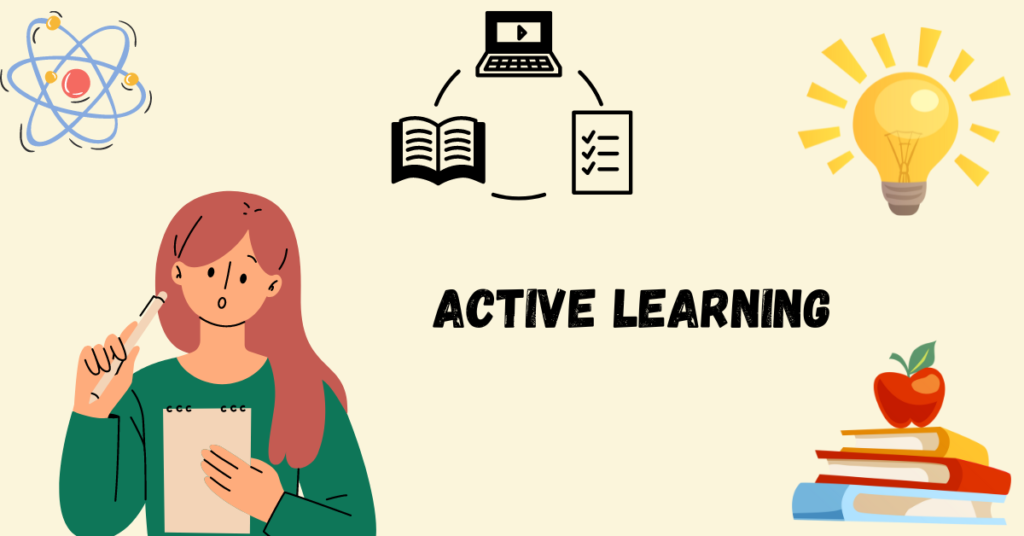
What is Active Learning?
Active learning is more than just passively reading a textbook or listening to a lecture. It’s about engaging with the material in ways that force you to think critically, apply concepts, and interact with the content on a deeper level. When you actively learn, you’re not just absorbing information—you’re making it stick.
Why Active Learning is Effective:
Research shows that students who use active learning techniques tend to retain more information, understand concepts better, and perform better on exams. This is because active learning involves multiple cognitive processes, such as analysis, synthesis, and evaluation, which strengthen your understanding and memory.
Active Learning Techniques to Try:
- Summarization
After studying a section of your textbook or listening to a lecture, pause and summarize what you’ve just learned in your own words. This could be done verbally or in writing. Summarization forces you to process the information and identify the key points, helping to solidify your understanding. - Questioning
Develop the habit of asking questions about the material. What are the key concepts? Why are they important? How do they relate to what you already know? Creating questions as you study turns passive reading into an interactive exercise. You can also try answering these questions later to test your knowledge. - Teaching Others
One of the best ways to learn is to teach. Explain a concept to a friend, a study group, or even to yourself. Teaching forces you to organize your thoughts, simplify complex ideas, and communicate them clearly. It’s a powerful way to reinforce what you’ve learned. - Practice Problems and Quizzes
Actively applying what you’ve learned through practice problems or quizzes is essential, especially for subjects like math, science, and languages. Testing yourself helps identify areas where you need further review and ensures that you can apply knowledge under test conditions. - Discussion and Debates
Engaging in discussions or debates about a topic can deepen your understanding. Discussing different perspectives, defending your viewpoints, and considering counterarguments all contribute to a richer grasp of the material. - Mind Mapping
As mentioned in the note-taking section, mind mapping is a great tool for visual learners. Creating a mind map while studying helps you connect ideas, see relationships, and structure information in a way that’s easy to recall.
Interaction:
Pick one of these active learning techniques and apply it during your next study session. For example, after reading a chapter, try summarizing the main points or creating a list of questions to quiz yourself later. Notice how this changes your level of engagement and retention.
Anecdote:
Emily, who struggled with retaining information just by reading. She decided to start summarizing each chapter of her textbook in her own words and teaching the concepts to her younger brother. By the time exams rolled around, Emily found that she not only remembered the material but understood it on a deeper level. Her grades improved dramatically, and she even started to enjoy studying.
Quote:
As Albert Einstein famously said, “If you can’t explain it simply, you don’t understand it well enough.” Active learning techniques help you reach that level of understanding where everything just clicks.
8. Using Technology Wisely

The Double-Edged Sword of Technology:
Technology has revolutionized the way we study. With instant access to information, online courses, and digital tools, learning has never been more accessible. However, technology can also be a major distraction if not used wisely. The key is to leverage the benefits of technology while minimizing its potential downsides.
Tips for Using Technology Effectively:
- Educational Apps and Tools
There’s an app for almost everything, and studying is no exception. Apps like Quizlet, Anki, and Duolingo can make studying more interactive and fun. For example, Quizlet allows you to create flashcards and test yourself on key concepts, while Anki uses spaced repetition to help you memorize information over time.
Pro Tip: Use productivity apps like Forest or Focus@Will to keep distractions at bay. These apps help you stay focused by encouraging you to concentrate for set periods, often with the promise of rewards, like growing a virtual tree in Forest. - Online Courses and Tutorials
Struggling with a particular topic? There are countless free and paid online courses available on platforms like Coursera, Khan Academy, and Udemy. These courses often include video tutorials, practice exercises, and forums where you can ask questions and engage with other learners.
Pro Tip: Supplement your classroom learning with these resources to gain different perspectives or fill in gaps in your understanding. For example, if calculus is giving you a hard time, a Khan Academy tutorial might explain it in a way that finally makes sense. - Organizing Digital Notes
Digital note-taking tools like Evernote, OneNote, and Google Keep can help you organize your notes, set reminders, and even collaborate with classmates. These tools often come with search functions that make it easy to find specific information quickly.
Pro Tip: Create folders for each subject and use tags to categorize your notes by topic, making it easier to review and study for exams. - Time Management Apps
Time management apps like Trello, Todoist, and Microsoft To-Do can help you keep track of assignments, deadlines, and study schedules. These tools allow you to break down big tasks into smaller, manageable steps, set due dates, and even prioritize tasks based on importance.
Pro Tip: Use these apps to plan your study schedule for the week. You can set reminders for when to start studying for a test or when a project deadline is approaching. - Avoiding Distractions
The internet is full of distractions, from social media to cat videos. To stay focused, consider using apps like Cold Turkey or StayFocusd, which block distracting websites for a set period.
Pro Tip: Designate specific times in your day to check social media or respond to messages, and stick to those times. This helps you stay focused during your study sessions without feeling the constant urge to check your phone.
Anecdote:
Tom, a college student who was constantly distracted by his phone. He found it hard to focus on studying because he was always checking social media. After downloading the app Cold Turkey, Tom started blocking all social media sites during his study sessions. Not only did his focus improve, but he also finished his assignments faster, giving him more free time to relax and hang out with friends.
Quote:
As Steve Jobs once said, “Technology is nothing. What’s important is that you have faith in people, that they’re basically good and smart, and if you give them tools, they’ll do wonderful things with them.” Use technology as a tool to enhance your studying, not as a distraction that hinders your progress.
9. Taking Care of Your Mental and Physical Health
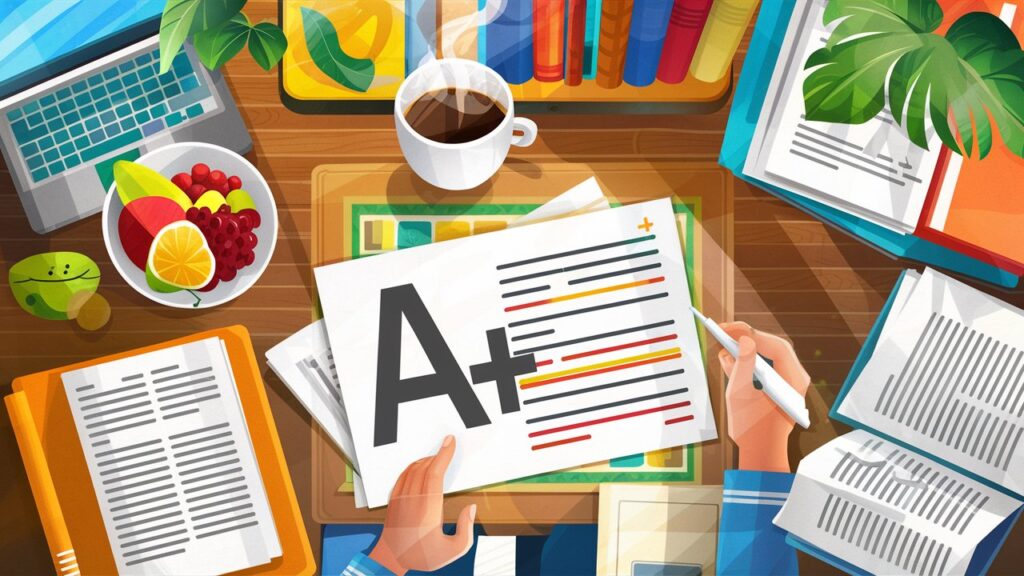
The Connection Between Health and Studying:
Your brain is like a high-performance engine, and just like any engine, it needs the right fuel and maintenance to function at its best. Taking care of your mental and physical health is essential for effective studying. When your body and mind are in good shape, you can focus better, retain more information, and feel more motivated.
Tips for Maintaining Mental and Physical Health:
- Get Enough Sleep
Sleep is crucial for memory consolidation, cognitive function, and overall well-being. While it might be tempting to pull an all-nighter before a big test, lack of sleep can actually impair your ability to remember what you’ve studied. Aim for 7-9 hours of quality sleep each night.
Pro Tip: Establish a regular sleep routine by going to bed and waking up at the same time every day, even on weekends. This helps regulate your body’s internal clock and improves sleep quality. - Exercise Regularly
Physical activity isn’t just good for your body; it’s great for your brain too. Exercise increases blood flow to the brain, which enhances cognitive function, memory, and concentration. It also helps reduce stress and anxiety, which can hinder your ability to study effectively.
Pro Tip: Incorporate regular exercise into your routine, whether it’s a daily walk, yoga, or a more intense workout. Even short bursts of physical activity, like stretching or a quick jog, can help refresh your mind during study breaks. - Eat a Balanced Diet
What you eat has a direct impact on your brain function. A diet rich in fruits, vegetables, whole grains, and lean proteins can boost your energy levels and improve cognitive performance. On the other hand, consuming too much sugar or junk food can lead to energy crashes and difficulty concentrating.
Pro Tip: Include brain-boosting foods like blueberries, nuts, and fatty fish in your diet. Avoid heavy meals before study sessions, as they can make you feel sluggish. - Manage Stress
Stress is a common part of student life, but chronic stress can be detrimental to your health and your studies. Learning how to manage stress effectively is key to maintaining mental well-being. Techniques like deep breathing, meditation, and mindfulness can help you stay calm and focused.
Pro Tip: Set aside time each day for relaxation, whether it’s through meditation, reading, or spending time with friends. Regular breaks during study sessions can also help reduce stress and prevent burnout. - Stay Hydrated
Dehydration can affect your concentration, memory, and overall cognitive function. Drinking enough water throughout the day is essential for keeping your brain and body in top condition.
Pro Tip: Keep a water bottle on your desk while studying and take sips regularly. If you find plain water boring, try adding a slice of lemon or cucumber for some flavor. - Practice Mindfulness
Mindfulness involves being fully present and engaged in the moment, which can help reduce anxiety and improve focus. Practicing mindfulness during your study sessions can enhance your ability to concentrate and retain information.
Pro Tip: Start your study session with a few minutes of mindfulness meditation. Close your eyes, take deep breaths, and focus on your breathing. This can help clear your mind and prepare you for focused studying.
Anecdote:
Jake, a student who was constantly stressed out and running on little sleep. He found it hard to concentrate and his grades were slipping. After making a few changes—getting more sleep, eating healthier, and incorporating short meditation sessions into his day—Jake noticed a significant improvement in his focus and energy levels. His grades improved, and he felt more in control of his studies.
Quote:
As the ancient Roman poet Juvenal said, “Mens sana in corpore sano,” which means “A healthy mind in a healthy body.” Taking care of your mental and physical health is not just important for your overall well-being but also for academic success.
10. Reviewing and Self-Assessment Techniques to study effectively
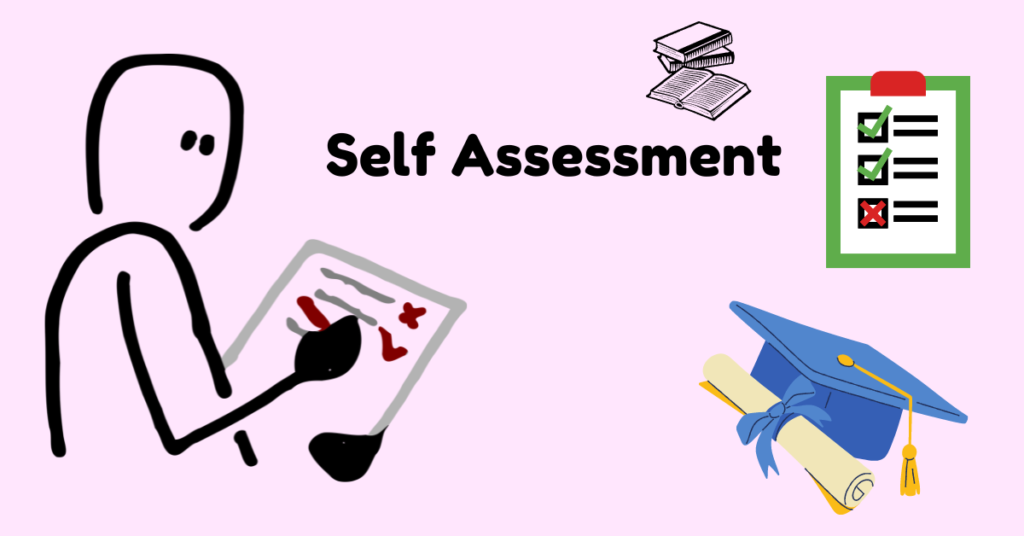
The Role of Review and Self-Assessment:
Reviewing and self-assessment are critical for reinforcing what you’ve learned and identifying areas where you need further improvement. Without regular review, information can fade from memory, and without self-assessment, you may not know if you truly understand the material. These practices help consolidate learning and boost long-term retention.
Effective Review Techniques:
- Spaced Repetition
Spaced repetition involves reviewing material at increasing intervals over time. This technique helps reinforce information and improves long-term retention. The idea is to review content just before you’re likely to forget it, which strengthens your memory.
Pro Tip: Use apps like Anki or Quizlet that incorporate spaced repetition algorithms to schedule reviews of flashcards and practice questions. - Active Recall
Active recall is the practice of retrieving information from memory rather than simply re-reading notes. This technique is more effective for learning because it forces you to recall information actively, which strengthens neural connections.
Pro Tip: Test yourself regularly on the material you’ve studied. Use practice questions, flashcards, or try to explain concepts out loud without looking at your notes. - Self-Quizzing
Self-quizzing is a straightforward but powerful technique for reviewing material. Creating quizzes or practice tests based on your notes and textbook helps you gauge your understanding and identify areas that need more review.
Pro Tip: After studying a chapter, create a set of questions about key concepts. Take the quiz yourself, and then review any questions you got wrong. - Review Summaries and Key Points
Summarizing and reviewing key points helps you focus on the most important information. After each study session, spend a few minutes summarizing what you’ve learned and highlighting key concepts.
Pro Tip: Create summary sheets or concept maps for each topic. Review these summaries regularly to reinforce your understanding and keep important information fresh in your mind. - Group Study and Discussion
Studying with peers can enhance your understanding of the material. Discussing topics and explaining concepts to others can reveal gaps in your knowledge and provide new insights.
Pro Tip: Form a study group with classmates to review and discuss material. Use this time to quiz each other and explain concepts to one another.
Self-Assessment Strategies:
- Set Goals and Track Progress
Establish specific goals for your study sessions and track your progress. This helps you stay motivated and focused on areas where you need improvement.
Pro Tip: Keep a study journal where you record your goals, what you’ve accomplished, and areas where you need more practice. - Reflect on Your Learning
Take time to reflect on what you’ve learned and how well you understand the material. Consider what strategies are working and where you might need to adjust your approach.
Pro Tip: After each study session, ask yourself what you found challenging and what you understood well. Use this reflection to guide your future study sessions. - Seek Feedback
Getting feedback from teachers, tutors, or peers can provide valuable insights into your understanding and performance. Use this feedback to make adjustments and improve.
Pro Tip: Ask for feedback on practice tests, essays, or assignments to identify areas where you can improve. - Monitor Your Exam Performance
Pay attention to your performance on exams and quizzes. Analyze any mistakes you make and understand why you got questions wrong. Use this information to guide your study efforts.
Pro Tip: Review past exams and quizzes to identify patterns in the types of questions you struggle with. Focus your study efforts on these areas.
Anecdote:
Laura, a student who struggled with math. She started using spaced repetition and active recall techniques to review her notes. Laura also began self-quizzing regularly and found that her understanding of math concepts improved significantly. Her test scores rose, and she felt more confident in her abilities.
As the famous educational psychologist John Dewey said, “We do not learn from experience… we learn from reflecting on experience.” Regular review and self-assessment help you reflect on what you’ve learned and continually improve your study habits.
Conclusion: Putting It All Together
The Road to Effective Studying:
Effective studying isn’t about finding a one-size-fits-all solution but rather about combining various strategies that work best for you. It’s about setting up a study routine, managing your time wisely, taking good notes, engaging in active learning, using technology to your advantage, and taking care of your mental and physical health. Each component plays a crucial role in creating a study plan that enhances understanding, retention, and academic performance.
Key Takeaways:
- Create a Study Plan:
A well-organized study plan helps you manage your time, set goals, and track progress. Use tools like planners or digital apps to map out your study sessions and ensure you cover all necessary topics. - Use Effective Study Techniques:
Techniques like active recall, spaced repetition, and summarization are proven methods to improve learning. Combine these with effective note-taking and regular review to enhance your study sessions. - Leverage Technology Wisely:
Technology can be a powerful ally in your studies. Utilize educational apps, online resources, and time management tools to support your learning. However, be mindful of potential distractions and set boundaries to keep your focus on your goals. - Prioritize Health and Well-being:
Your physical and mental health directly impact your ability to study effectively. Ensure you get enough sleep, exercise regularly, eat a balanced diet, manage stress, and stay hydrated. Incorporating mindfulness practices can also enhance focus and reduce anxiety. - Engage in Self-Assessment:
Regularly assess your understanding through self-quizzes, practice tests, and reflections. Use feedback and track your progress to identify strengths and areas for improvement.
Final Thoughts:
Studying effectively is a dynamic process that involves experimenting with different strategies and finding what works best for you. It requires dedication, organization, and a proactive approach to learning. By integrating these techniques into your study routine, you’ll build a solid foundation for academic success and personal growth.
William Ernest Henley said, “I am the master of my fate, I am the captain of my soul.”
Next Steps:
Take a moment to review the strategies outlined in this article and consider which ones resonate most with your learning style. Begin integrating them into your study routine, and adjust as needed to find the optimal balance. Remember, effective studying is a journey, not a destination. Keep experimenting, stay motivated, and embrace the process of learning.



